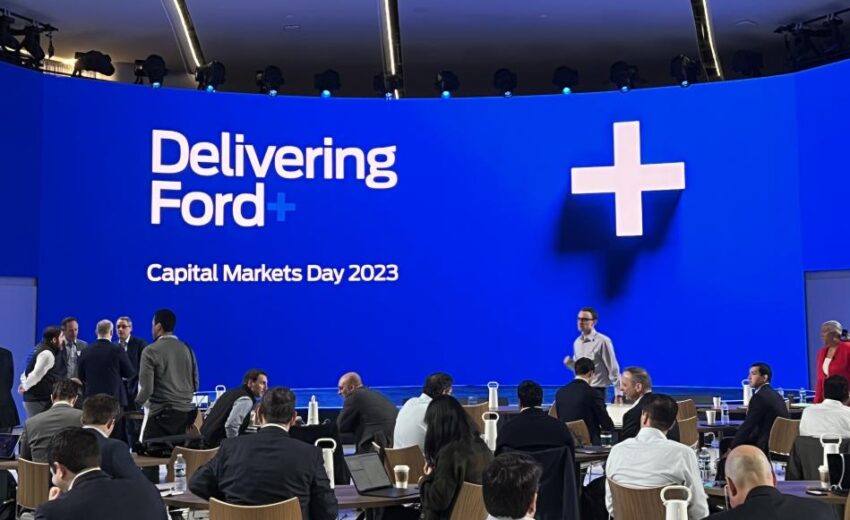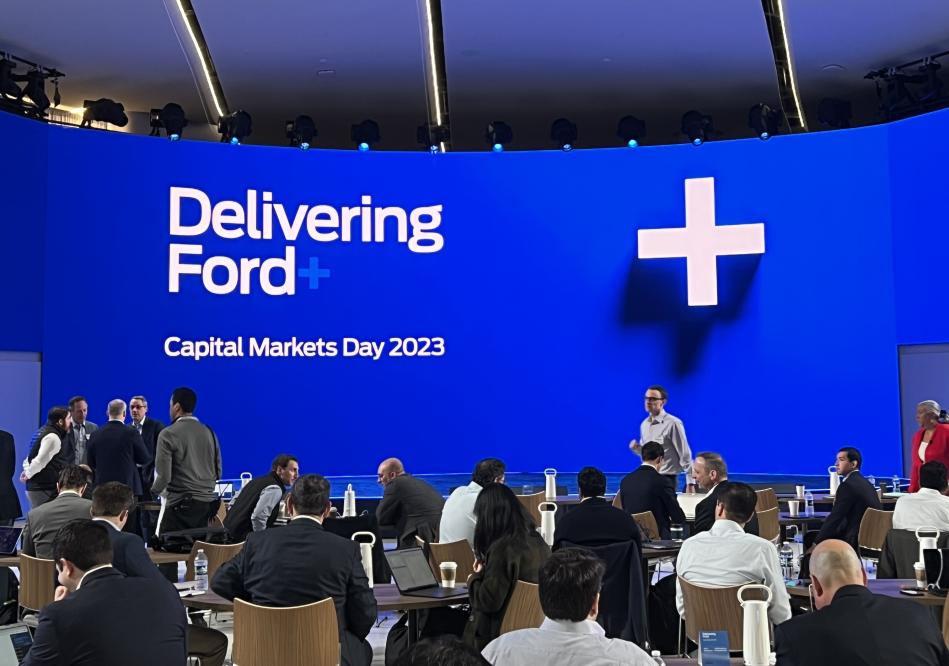
Ford CMD: The Right Goals Are Set; But Can The Company Execute?

Last week I attended Ford’s Capital Markets Day. Ford held the CMD to report on the progress of its three divisions and the goals they will be measured against. This piece focuses on the goals relating to software development and customer experience and their impact on the recurring monetization of the company’s customers because these are also the themes of my forthcoming book.
Ford’s by-invitation CMD was the first it held in several years. Those who attended it in person had the added opportunity to experience some of the company’s new models. I attended remotely. Reporters in attendance wrote about the event and investment analysts already published their reports with their thinking about how the material presented and disclosed during the event could impact Ford’s near- and medium-term performance. With this piece, I want to comment on two topics that were discussed during the CMD: customer experience and software development.
The thesis of my forthcoming book is that Software-Defined Vehicles being big data generators, combined with AI enable a new end-to-end customer experience, which I call the Flagship Experience, through which the OEM can monetize the customer on a recurring basis using value-adding services and in the process fostering long-term customer loyalty. At the core of this experience is customer-centricity, which implies customer understanding, and the ability to translate this understanding into products and services that can be personalized. This means that the automaker’s relationship with a customer may extend beyond a single vehicle. It also means that the automaker does not only establish a relationship with the vehicle’s first owner but with every subsequent owner. Understanding the customers rests on the capability to analyze the available data utilizing large-scale AI. Personalizing the vehicle and the overall experience rests on the Software-Defined Vehicle’s software platform.
In his opening remarks, Ford CEO Jim Farley communicated a message of transformation. He stressed the need for the company to gain a deep understanding of its customers, provide them with personalization without complexity, and stated that the company’s data-generating vehicles can transform Ford’s relationship with its customers. His goal for the company is to generate profit streams that don’t dry up during downturns. These streams will come from experiences that integrate digital with physical life. He sees this model applies to all three divisions and is already being demonstrated at Ford Pro, whose aspirational model is John Deere.
Automakers have been developing software for decades. Unfortunately, the software in clean sheet Software-Defined Vehicles is very different from the embedded software used in the microcontroller-based architectures of conventional vehicles. A sheet Software-Defined Vehicle is built around a software platform that is developed together with the vehicle’s hardware platform, is based on a well-articulated software philosophy, and is implemented using modern software methodologies. The software development teams rely on software tooling platforms that increase their productivity and the quality of code they generate.
Doug Field, Ford’s chief advanced product development and technology officer understands these requirements very well because of his tenure at Apple and most recently Tesla. One of his main points was that electrification is not the automotive industry’s big transformation. It is software. His presentation focused largely on the “Gen 2″ Software-Defined Vehicles his organization is developing. He spoke about the “platform thinking” the engineers must adopt and their focus on the collected data to customer determine what features to include in the new vehicles. He emphasized that the platform must support connectivity, productivity, safety, security, and partial vehicle autonomy (starting with Blue Cruise today and moving to L3 autonomy by 2025). Both in his initial remarks and during his breakout session he talked about the importance of the personalized customer experience.
Ted Cannis, Global CEO of Ford Pro, further emphasized the importance of exploiting the data coming from the fleet vehicles his organization is managing and the value fleet operators will continue to receive from the intelligence generated from this data and delivered through the Ford Pro Intelligence Platform. The goal is by 2026 to double the number of connected vehicles that will be managed by Ford Pro (today 30% of the managed vehicles are connected) and to derive significant recurring revenue per vehicle (of the order of $2500 per year).
Mr. Farley has built a strong management team. However, transformations such as the ones that Ford, and other incumbent OEMs, have undertaken to succeed in new mobility rely on the entire corporation executing flawlessly and for the duration. The industry does not have a strong success rate with transformations of this magnitude. We are already starting to read about problems that certain incumbent OEMs are having developing the software platforms their new vehicles are based on. I’m hopeful that Ford’s senior team will be able to drive the entire company to execute and achieve the goals stated during the CMD.




Leave a Reply